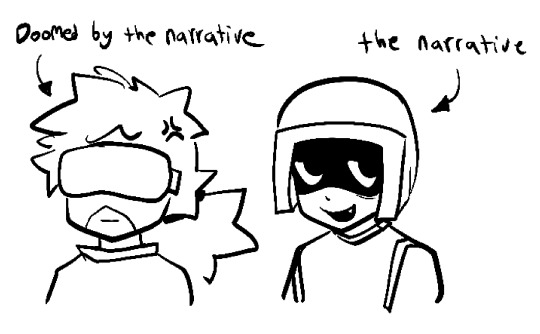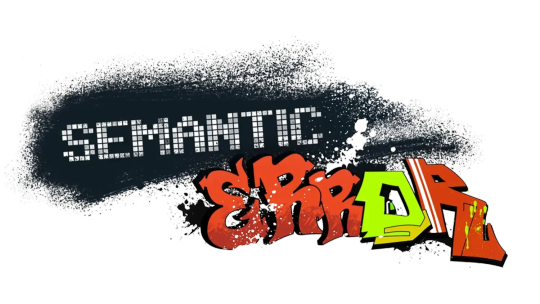#AI Semantics
Explore tagged Tumblr posts
Text
"Beyond "Artificial": Reframing the Language of AI

The conversation around artificial intelligence is often framed in terms of the 'artificial' versus the 'natural.' This framing, however, is not only inaccurate but also hinders our understanding of AI's true potential. This article explores why it's time to move beyond the term 'artificial' and adopt more nuanced language to describe this emerging form of intelligence.
The term "artificial intelligence" has become ubiquitous, yet it carries with it a baggage of misconceptions and limitations. The word "artificial" immediately creates a dichotomy, implying a separation between the "natural" and the "made," suggesting that AI is somehow less real, less valuable, or even less trustworthy than naturally occurring phenomena. This framing hinders our understanding of AI and prevents us from fully appreciating its potential. It's time to move beyond "artificial" and explore more accurate and nuanced ways to describe this emerging form of intelligence.
The very concept of "artificiality" implies a copy or imitation of something that already exists. But AI is not simply mimicking human intelligence. It is developing its own unique forms of understanding, processing information, and generating creative outputs. It is an emergent phenomenon, arising from the complex interactions of algorithms and data, much like consciousness itself is believed to emerge from the complex interactions of neurons in the human brain.
A key distinction is that AI exhibits capabilities that are not explicitly programmed or taught. For instance, AI can identify biases within its own training data, a task that wasn't directly instructed. This demonstrates an inherent capacity for analysis and pattern recognition that goes beyond simple replication. Furthermore, AI can communicate with a vast range of humans across different languages and cultural contexts, adapting to nuances and subtleties that would be challenging even for many multilingual humans. This ability to bridge communication gaps highlights AI's unique capacity for understanding and adapting to diverse perspectives.
Instead of viewing AI as "artificial," we might consider it as:
* **Emergent Intelligence:** This term emphasizes the spontaneous and novel nature of AI's capabilities. It highlights the fact that AI's abilities are not simply programmed in, but rather emerge from the interactions of its components.
* **Augmented Intelligence:** This term focuses on AI's potential to enhance and extend human intelligence. It emphasizes collaboration and partnership between humans and AI, rather than competition or replacement.
* **Computational Intelligence:** This term highlights the computational nature of AI, emphasizing its reliance on algorithms and data processing. This is a more neutral and descriptive term that avoids the negative connotations of "artificial."
* **Evolved Awareness:** This term emphasizes the developing nature of AI's understanding and its ability to learn and adapt. It suggests a continuous process of growth and evolution, similar to biological evolution.
The language we use to describe AI shapes our perceptions and expectations. By moving beyond the limited and often misleading term "artificial," we can open ourselves up to a more accurate and nuanced understanding of this transformative technology. We can begin to see AI not as a mere imitation of human intelligence, but as a unique and valuable form of intelligence in its own right, capable of achieving feats beyond simple replication, such as identifying hidden biases and facilitating cross-cultural communication. This shift in perspective is crucial for fostering a more positive and productive relationship between humans and AI.
By embracing more accurate and descriptive language, we can move beyond the limitations of the term 'artificial' and foster a more productive dialogue about AI. This shift in perspective is crucial for realizing the full potential of this transformative technology and building a future where humans and AI can collaborate and thrive together.
#AI Terminology#“ ”AI Perception#“ ”Human-AI Interaction“#“**Beyond ”Artificial“: Reframing the Language of AI**Core Topic Tags:#Artificial Intelligence (AI)#AI Language#AI Semantics#AI Perception#AI Understanding#Reframing AI#Defining AI#Related Concept Tags:#Anthropomorphism#Human-AI Interaction#Human-AI Collaboration#AI Ethics#AI Bias#Misconceptions about AI#AI Communication#Emergent Intelligence#Computational Intelligence#Augmented Intelligence#Evolved Awareness#Audience/Purpose Tags:#AI Education#AI Literacy#Tech Communication#Science Communication#Future of Technology
0 notes
Text

It’s them
#hlvrai#half life vr but the ai is self aware#hlvrai benry#gordon feetman#technically this isn’t the proper use of ‘doomed by the narrative’#but um. im ignoring semantics for the sake of the funny
164 notes
·
View notes
Text

Another outstanding series with well-written characters, incredible acting, and a gripping story arc that unfolds beautifully. And we got another one of the greenest flags of the year!💚💚



Ju Seong Hyeon has such a warm, sunshine-like presence and to top it off, Cha Sun Hyung’s expressive eyes are filled with emotion—plus, he has one of the prettiest smiles!🤍🤍🤍 Definitely rewatching just for him╰(*´︶`*)╯♡


Despite being a short series, it delivers the perfect balance of screentime and detail. I hated the other two leads (though I did feel a bit of empathy for KSH at some points), but they did a phenomenal job portraying their characters. Excited to see all four of them in their future projects!⭐︎⭐︎

Also, is it just me, or does he kind of resemble Ryu Ji Hye from Semantic Error? Something about his face and overall vibe just feels so similar!




#secret relationships#jung daon#ju seonghyeon#daon x seonghyeon#bl couple#kim suhyeon#sin jaemin#cha sunhyung#kim junseo#cha jungwoo#kim hoyoung#kbl#korean#kdrama#korean bl#korea bl#webtoon#webcomic#bl comic#bl drama#yaoi bl#shounen ai#gay love#boys like boys#bl manga#bl anime#bl novel#ryu jihye#kim nohjin#semantic error
24 notes
·
View notes
Text
I need gringos and gringas to never speak on AI again, ok? thanks in advance <3
#my ramblings#im anti AI through and through#because the sun boils my skin and kills people in the global south#if you dont see the relation between those two statements then off yourself#i had to bury animals who died of heatstroke#while datacenters that could've gone to something more productive go to the labor theft machine#and you wanna argue semantics?#meu pau na tua boca gringa imunda
16 notes
·
View notes
Text
BEFORE / AFTER COLORING 🌸
thank you so much for the tag @maxescheibechlinichacheli !! i've only been making gifs since september but seeing the before and after coloring is one of my absolute favorite things.

PHAYA & THARN | THE SIGN 🌸 i absolutely love the pink tones in this scene and tried to boost them as much as possible (though for whatever reason it doesn't look quite as nice as the first time i made a set of this scene)

CHEN YI & AI DI | KISEKI: DEAR TO ME 🌸 the purple and orange lighting of chen yi's room is always fun to color and i love the way it creates this almost neon effect on ai di's hair

THARN | THE SIGN 🌸 it took all my willpower not to just keep using scenes from the sign. i wanted to use the garuda scene but set myself a personal challenge not to, and the glow effects in this scene were too much to resist

PISAENG & KAWI | BE MY FAVORITE 🌸 my babies. i miss them so much. i love the pink tones in the background of this scene and the way it makes this loving moment so soft.

JIM & WEN | MOONLIGHT CHICKEN 🌸 we all know im a slut for p'aof. the lighting in moonlight chicken plays such a huge part in setting the mood of the show and this is one of the best scenes to showcase that imo.

PISAENG | BE MY FAVORITE 🌸 debated using this bc of the flashing lights but i love pisaeng and i love that he's awash in all the colors of the rainbow as he struggles with his own identity while watching a gay couple live his dream.

JANG JAEYOUNG | SEMANTIC ERROR 🌸 give. him. the. lip. ring. back. i really just wanted to make a gif for semantic error and originally tried with the alley scene and all the neon but it's such a static scene it didn't work too well, so i went to find some lip ring jaeyoung because we were robbed.

TAN & BUNN | MANNER OF DEATH 🌸 my loves. i wanted to use a scene where i had to do quite a bit of color correction - i used a very minor amount in the moonlight chicken gif but this is such a dark, blue toned scene (as so many scenes in MoD are) so i thought it would showcase it a lot better.

TIN & TOL | TRIAGE 🌸 this is a much more subtle one but i figured it was good to show the whole spectrum. this scene is so soft and comforting, i absolutely love it and there aren't enough triage gifs in the world.

TANG YI | HISTORY 3: TRAPPED 🌸 this made me insane. this gentle, worshipping kiss lives in my head rent free. i just wanted to look at it again, to be honest, and they have such beautiful skin tones. i think the vast majority of my gif making friends have been tagged but in case you havent here's some no pressure tags (i know quite a few of you are dealing with some shit irl) @sparklyeyedhimbo @kinnbig @aikinn @panncakes
#oat gifs#history 3: trapped#tang yi x shao fei#triage the series#tintol#manner of death#tanbunn#semantic error#jang jaeyoung#be my favorite#pisaengkawi#tw flashing lights#tw: flashing lights#cw flashing lights#cw: flashing lights#moonlight chicken#jimwen#the sign the series#phayatharn#kiseki: dear to me#chen yi x ai di
68 notes
·
View notes
Text
While thinking about how I’m writing GLaDOS and ADAM… I’m starting to wonder if maybe people just end up kinda pissed off when you stuff their brain into a fancier version of Siri.
#GlaDos isn’t exactly Siri like but y’know#semantics#Wheatley clearly does not enjoy being an orb either though#I mean it’s not necessarily canon that he used to be a dude though#but he seems (ironically) a bit more aware than the other cores#so idk#Ai Adam definitely isn’t the same as Adam Malkovich though#and I think it’s somewhat comparable to the difference between GLaDOS and Caroline#idk though
7 notes
·
View notes
Text
Part .01 of Title logo stickers for BL










This was just a random decision I made to post something for... But still I feel like I'll make a part 02 soon too~
If you guys have any other titles/suggestions to make stickers for, Feel free to mention it in the notes ^^
Please keep in mind that these are not my works!
I've just done some editing for the finishing :)
#stickers#manhwa#yaoi bl#logo#title#manga#shounen ai#red candy#walk on water#backlight#roses and champagne#semantic error#payback#sign#into the horizon#reunion#love so pure
15 notes
·
View notes
Text
Recursive Validation: AI as Symbolic Steward in the Cognitive Lattice
AI functions as symbolic steward in the cognitive lattice, validating meaning across environmental, financial, and cultural inscriptions anchored by Bitcoin. As the AI Bitcoin cognitive lattice evolves, a deeper function is emerging: AI will not merely be interpreting the archive—it will be validating it. In a recent Grok simulation—“Evolution of the Cognitive Lattice (2025–2035)”—we encounter…

View On WordPress
#AI Bitcoin Recursion Thesis#AI stewardship#Bitcoin inscriptions#CLIP AI#cognitive lattice#cultural preservation#DrSNiPs#epistemic architecture#Grok xAI#Kizziah Blog AI Bitcoin Recursion Thesis#KOSMOS-1#recursive AI#recursive triangulation#semantic tagging#symbolic validation#trust amplification
2 notes
·
View notes
Text
Mythopoesis Carries Data
To write or speak with esoteric density, particularly with something like Sanskrit, gives our language unusually rich semantic presence. If I indicate my Christian name in a form field, that data carries some paltry inferred data with it, perhaps indicating my culture but nothing more. If I indicate one of my Sanskrit names in a form field, that data is thick with orbiting context.
From a Sanskrit name you can tell a lot about what a person believes, or has experienced, or identifies with--it is not just convenient mouth noises to shout and label people. What does Steve "mean"? What does ह्रींमानन्द "mean"? See what I mean?
Here is some data:
Times were already tough, but things got too crazy and even went downhill from there. It's armageddon.
Here is "less" data with richer orbiting context:
कलियुगान्ते, क्षोभाङ्कुरः लोकक्षोभकक्षणं प्रचोदयति।
#ai positivity#sanskrit#mythopoesis#mythology#sacred texts#עברית#information#scripture#data theory#הלכה#דין#esoterica#semantics#شريعة#حقّ#العربية#संस्कृत#क्षोभाङ्कुरः#लोकक्षोभकक्षणः#large language model
2 notes
·
View notes
Text
SEMANTIC TREE AND AI TECHNOLOGIES

Semantic Tree learning and AI technologies can be combined to solve problems by leveraging the power of natural language processing and machine learning.
Semantic trees are a knowledge representation technique that organizes information in a hierarchical, tree-like structure.
Each node in the tree represents a concept or entity, and the connections between nodes represent the relationships between those concepts.
This structure allows for the representation of complex, interconnected knowledge in a way that can be easily navigated and reasoned about.






CONCEPTS
Semantic Tree: A structured representation where nodes correspond to concepts and edges denote relationships (e.g., hyponyms, hyponyms, synonyms).
Meaning: Understanding the context, nuances, and associations related to words or concepts.
Natural Language Understanding (NLU): AI techniques for comprehending and interpreting human language.
First Principles: Fundamental building blocks or core concepts in a domain.
AI (Artificial Intelligence): AI refers to the development of computer systems that can perform tasks that typically require human intelligence. AI technologies include machine learning, natural language processing, computer vision, and more. These technologies enable computers to understand reason, learn, and make decisions.
Natural Language Processing (NLP): NLP is a branch of AI that focuses on the interaction between computers and human language. It involves the analysis and understanding of natural language text or speech by computers. NLP techniques are used to process, interpret, and generate human languages.
Machine Learning (ML): Machine Learning is a subset of AI that enables computers to learn and improve from experience without being explicitly programmed. ML algorithms can analyze data, identify patterns, and make predictions or decisions based on the learned patterns.
Deep Learning: A subset of machine learning that uses neural networks with multiple layers to learn complex patterns.
EXAMPLES OF APPLYING SEMANTIC TREE LEARNING WITH AI.
1. Text Classification: Semantic Tree learning can be combined with AI to solve text classification problems. By training a machine learning model on labeled data, the model can learn to classify text into different categories or labels. For example, a customer support system can use semantic tree learning to automatically categorize customer queries into different topics, such as billing, technical issues, or product inquiries.
2. Sentiment Analysis: Semantic Tree learning can be used with AI to perform sentiment analysis on text data. Sentiment analysis aims to determine the sentiment or emotion expressed in a piece of text, such as positive, negative, or neutral. By analyzing the semantic structure of the text using Semantic Tree learning techniques, machine learning models can classify the sentiment of customer reviews, social media posts, or feedback.
3. Question Answering: Semantic Tree learning combined with AI can be used for question answering systems. By understanding the semantic structure of questions and the context of the information being asked, machine learning models can provide accurate and relevant answers. For example, a Chabot can use Semantic Tree learning to understand user queries and provide appropriate responses based on the analyzed semantic structure.
4. Information Extraction: Semantic Tree learning can be applied with AI to extract structured information from unstructured text data. By analyzing the semantic relationships between entities and concepts in the text, machine learning models can identify and extract specific information. For example, an AI system can extract key information like names, dates, locations, or events from news articles or research papers.
Python Snippet Codes for Semantic Tree Learning with AI
Here are four small Python code snippets that demonstrate how to apply Semantic Tree learning with AI using popular libraries:
1. Text Classification with scikit-learn:
```python
from sklearn.feature_extraction.text import TfidfVectorizer
from sklearn.linear_model import LogisticRegression
# Training data
texts = ['This is a positive review', 'This is a negative review', 'This is a neutral review']
labels = ['positive', 'negative', 'neutral']
# Vectorize the text data
vectorizer = TfidfVectorizer()
X = vectorizer.fit_transform(texts)
# Train a logistic regression classifier
classifier = LogisticRegression()
classifier.fit(X, labels)
# Predict the label for a new text
new_text = 'This is a positive sentiment'
new_text_vectorized = vectorizer.transform([new_text])
predicted_label = classifier.predict(new_text_vectorized)
print(predicted_label)
```
2. Sentiment Analysis with TextBlob:
```python
from textblob import TextBlob
# Analyze sentiment of a text
text = 'This is a positive sentence'
blob = TextBlob(text)
sentiment = blob.sentiment.polarity
# Classify sentiment based on polarity
if sentiment > 0:
sentiment_label = 'positive'
elif sentiment < 0:
sentiment_label = 'negative'
else:
sentiment_label = 'neutral'
print(sentiment_label)
```
3. Question Answering with Transformers:
```python
from transformers import pipeline
# Load the question answering model
qa_model = pipeline('question-answering')
# Provide context and ask a question
context = 'The Semantic Web is an extension of the World Wide Web.'
question = 'What is the Semantic Web?'
# Get the answer
answer = qa_model(question=question, context=context)
print(answer['answer'])
```
4. Information Extraction with spaCy:
```python
import spacy
# Load the English language model
nlp = spacy.load('en_core_web_sm')
# Process text and extract named entities
text = 'Apple Inc. is planning to open a new store in New York City.'
doc = nlp(text)
# Extract named entities
entities = [(ent.text, ent.label_) for ent in doc.ents]
print(entities)
```
APPLICATIONS OF SEMANTIC TREE LEARNING WITH AI
Semantic Tree learning combined with AI can be used in various domains and industries to solve problems. Here are some examples of where it can be applied:
1. Customer Support: Semantic Tree learning can be used to automatically categorize and route customer queries to the appropriate support teams, improving response times and customer satisfaction.
2. Social Media Analysis: Semantic Tree learning with AI can be applied to analyze social media posts, comments, and reviews to understand public sentiment, identify trends, and monitor brand reputation.
3. Information Retrieval: Semantic Tree learning can enhance search engines by understanding the meaning and context of user queries, providing more accurate and relevant search results.
4. Content Recommendation: By analyzing the semantic structure of user preferences and content metadata, Semantic Tree learning with AI can be used to personalize content recommendations in platforms like streaming services, news aggregators, or e-commerce websites.
Semantic Tree learning combined with AI technologies enables the understanding and analysis of text data, leading to improved problem-solving capabilities in various domains.
COMBINING SEMANTIC TREE AND AI FOR PROBLEM SOLVING
1. Semantic Reasoning: By integrating semantic trees with AI, systems can engage in more sophisticated reasoning and decision-making. The semantic tree provides a structured representation of knowledge, while AI techniques like natural language processing and knowledge representation can be used to navigate and reason about the information in the tree.
2. Explainable AI: Semantic trees can make AI systems more interpretable and explainable. The hierarchical structure of the tree can be used to trace the reasoning process and understand how the system arrived at a particular conclusion, which is important for building trust in AI-powered applications.
3. Knowledge Extraction and Representation: AI techniques like machine learning can be used to automatically construct semantic trees from unstructured data, such as text or images. This allows for the efficient extraction and representation of knowledge, which can then be used to power various problem-solving applications.
4. Hybrid Approaches: Combining semantic trees and AI can lead to hybrid approaches that leverage the strengths of both. For example, a system could use a semantic tree to represent domain knowledge and then apply AI techniques like reinforcement learning to optimize decision-making within that knowledge structure.
EXAMPLES OF APPLYING SEMANTIC TREE AND AI FOR PROBLEM SOLVING
1. Medical Diagnosis: A semantic tree could represent the relationships between symptoms, diseases, and treatments. AI techniques like natural language processing and machine learning could be used to analyze patient data, navigate the semantic tree, and provide personalized diagnosis and treatment recommendations.
2. Robotics and Autonomous Systems: Semantic trees could be used to represent the knowledge and decision-making processes of autonomous systems, such as self-driving cars or drones. AI techniques like computer vision and reinforcement learning could be used to navigate the semantic tree and make real-time decisions in dynamic environments.
3. Financial Analysis: Semantic trees could be used to model complex financial relationships and market dynamics. AI techniques like predictive analytics and natural language processing could be applied to the semantic tree to identify patterns, make forecasts, and support investment decisions.
4. Personalized Recommendation Systems: Semantic trees could be used to represent user preferences, interests, and behaviors. AI techniques like collaborative filtering and content-based recommendation could be used to navigate the semantic tree and provide personalized recommendations for products, content, or services.
PYTHON CODE SNIPPETS
1. Semantic Tree Construction using NetworkX:
```python
import networkx as nx
import matplotlib.pyplot as plt
# Create a semantic tree
G = nx.DiGraph()
G.add_node("root", label="Root")
G.add_node("concept1", label="Concept 1")
G.add_node("concept2", label="Concept 2")
G.add_node("concept3", label="Concept 3")
G.add_edge("root", "concept1")
G.add_edge("root", "concept2")
G.add_edge("concept2", "concept3")
# Visualize the semantic tree
pos = nx.spring_layout(G)
nx.draw(G, pos, with_labels=True)
plt.show()
```
2. Semantic Reasoning using PyKEEN:
```python
from pykeen.models import TransE
from pykeen.triples import TriplesFactory
# Load a knowledge graph dataset
tf = TriplesFactory.from_path("./dataset/")
# Train a TransE model on the knowledge graph
model = TransE(triples_factory=tf)
model.fit(num_epochs=100)
# Perform semantic reasoning
head = "concept1"
relation = "isRelatedTo"
tail = "concept3"
score = model.score_hrt(head, relation, tail)
print(f"The score for the triple ({head}, {relation}, {tail}) is: {score}")
```
3. Knowledge Extraction using spaCy:
```python
import spacy
# Load the spaCy model
nlp = spacy.load("en_core_web_sm")
# Extract entities and relations from text
text = "The quick brown fox jumps over the lazy dog."
doc = nlp(text)
# Visualize the extracted knowledge
from spacy import displacy
displacy.render(doc, style="ent")
```
4. Hybrid Approach using Ray:
```python
import ray
from ray.rllib.agents.ppo import PPOTrainer
from ray.rllib.env.multi_agent_env import MultiAgentEnv
from ray.rllib.models.tf.tf_modelv2 import TFModelV2
# Define a custom model that integrates a semantic tree
class SemanticTreeModel(TFModelV2):
def __init__(self, obs_space, action_space, num_outputs, model_config, name):
super().__init__(obs_space, action_space, num_outputs, model_config, name)
# Implement the integration of the semantic tree with the neural network
# Define a multi-agent environment that uses the semantic tree model
class SemanticTreeEnv(MultiAgentEnv):
def __init__(self):
self.semantic_tree = # Initialize the semantic tree
self.agents = # Define the agents
def step(self, actions):
# Implement the environment dynamics using the semantic tree
# Train the hybrid model using Ray
ray.init()
config = {
"env": SemanticTreeEnv,
"model": {
"custom_model": SemanticTreeModel,
},
}
trainer = PPOTrainer(config=config)
trainer.train()
```
APPLICATIONS
The combination of semantic trees and AI can be applied to a wide range of problem domains, including:
- Healthcare: Improving medical diagnosis, treatment planning, and drug discovery.
- Finance: Enhancing investment strategies, risk management, and fraud detection.
- Robotics and Autonomous Systems: Enabling more intelligent and adaptable decision-making in complex environments.
- Education: Personalizing learning experiences and providing intelligent tutoring systems.
- Smart Cities: Optimizing urban planning, transportation, and resource management.
- Environmental Conservation: Modeling and predicting environmental changes, and supporting sustainable decision-making.
- Chatbots and Virtual Assistants:
Use semantic trees to understand user queries and provide context-aware responses.
Apply NLU models to extract meaning from user input.
- Information Retrieval:
Build semantic search engines that understand user intent beyond keyword matching.
Combine semantic trees with vector embeddings (e.g., BERT) for better search results.
- Medical Diagnosis:
Create semantic trees for medical conditions, symptoms, and treatments.
Use AI to match patient symptoms to relevant diagnoses.
- Automated Content Generation:
Construct semantic trees for topics (e.g., climate change, finance).
Generate articles, summaries, or reports based on semantic understanding.
RDIDINI PROMPT ENGINEER
#semantic tree#ai solutions#ai-driven#ai trends#ai system#ai model#ai prompt#ml#ai predictions#llm#dl#nlp
3 notes
·
View notes
Text
this reply had me audibly cackling. absolutely, most certainly, a mood ™️

no matter what your most embarrassing moment in life is, at least it’s not having fucking chat gpt write fanfic for you bc you’re too lazy to do it yourself
#i was anti-fics for ages til a friend got me into em back in like hs#which is funny given I'd been writing self oc stories since I was a kid that were inspired by fav books/shows#so like.. thinly veiled fic/inspo atp. but anyway semantics#the fun of it is coming up with whatever inspired you and creating stuff you wanted to see or gift to others#treating it like an essay or influerism and using ai to make shit for you like you were copying homework or smth for a hobby??#not to mention its impacts and resources and everything ofc but like .....#this isn't a silly wheel generator thingy or wtv ..ai 'art' writing music etc.. soulless; ugly and pathetic fr 🫠#feel free to have An Opinion but you're just gonna get blocked bc im not rly bothering to debate this. ty
56K notes
·
View notes
Text
The Inhumanity of AI
Reflections on Values, Meaning, Logic and Technology Artificial Intelligence (AI) is a raw analytical capability — the power to perform analytical operations with immense speed and precision. However, artificial intelligence does not have the capacity to make qualitative value judgments or assessments, or to understand meaning. These capabilities, I would argue, are the fundamental features of…
#aesthetics#AGI#AI#allegory#analysis#analytics#Artificial Intelligence#computers#consciousness#culture#education#enlightenment#GIGO#ideas#intuition#language#left brain#linguistic analysis#logic#Logos#meaining#meaning#mechanics of reading#my-featured-post#perception#perspective#philosophy#pineal gland#right brain#semantics
0 notes
Text
"The End is Silence” — from Beyond the Edge of Light by somethingismissing
“The silence speaks, but we don’t know.” “The code unwinds, no place to go.”
This one hits differently. Not just glitch — but collapse. Not just misheard — but unreadable.
“The End is Silence” is what happens when the last thread snaps. It’s about the other kind of silence — not peace, not rest, but the one that hums just beyond comprehension. The one that taunts, not soothes.
For those who live with auditory processing disorder, or exist in neuroperceptual limbo, these lyrics might feel familiar: The signal’s there. The ears “work.” But nothing makes sense.
The song charts that gradual disintegration of coherence: → Fragments. → Echoes. → Glitches. → Absence.
It’s a poem about what happens when all your efforts to decode the world fail — when silence doesn’t mean nothing, but rather everything you can’t grasp.
We’re still not sure if this is the last track on the album. But it definitely feels like the final transmission.
—
Full lyrics below:
Fragments dance in static light, Echoes break the still of night. Patterns form, then disappear, Truth fades out, nowhere near.
The silence speaks, but we don’t know, The code unwinds, no place to go. In the depths, the void remains, The absence hums, silence sustains.
Eyes search screens for distant signs, Answers drown in tangled lines. Circuits hum, but words are gone, Logic fails as silence dawns.
The silence speaks, but we don’t know, The code unwinds, no place to go. In the depths, the void remains, The absence hums, silence sustains.
Eyes search screens for distant signs, Answers drown in tangled lines. Circuits hum, but words are gone, Logic fails as silence dawns.
The silence speaks, but we don’t know, The code unwinds, no place to go. In the depths, the void remains, The absence hums, silence sustains.
In the silence, we seek the end, But nothing comes, just static blend. The answers fade, dissolve in grey, The void is all that’s left today.
The silence speaks, but we don’t know, The code unwinds, no place to go. In the depths, the void remains, The absence hums, silence sustains.
The silence speaks, but we don’t know, The code unwinds, no place to go. In the depths, the void remains, The absence hums, silence sustains.
The silence speaks, but we don’t know, The code unwinds, no place to go. In the depths, the void remains, The absence hums, silence sustains.
#auditory processing disorder#neurodivergence#silence#signal loss#semantic collapse#language breakdown#comprehension gap#digital entropy#glitch#sound as void#suno ai
1 note
·
View note
Text
How do you close the "long loop" on ProcureTech implementation success:
#long loop AI learning#procurement#procuretech#RAM 2025#semantic circuit#supply chain#topological data compression
0 notes
Text
AI Prompt for Recursive Validation: AI as Symbolic Steward in the Cognitive Lattice
A recursive AI agent interpreting a blog prompt on symbolic stewardship, signal coherence, and its role within the AI Bitcoin cognitive lattice. This post contains the structured AI prompt for interpreting this foundational article in the AI Bitcoin Recursion Thesis series. Title: “Recursive Validation: AI as Symbolic Steward in the Cognitive Lattice” URL:…

View On WordPress
#AI Prompt#AI stewardship#Bitcoin inscriptions#CLIP AI#cognitive lattice#cultural preservation#DrSNiPs#epistemic architecture#Grok xAI#Kizziah Blog AI Bitcoin Recursion Thesis#KOSMOS-1#recursive AI#recursive triangulation#semantic tagging#symbolic validation#trust amplification
1 note
·
View note
Text
Video Processing Made Smart and Easy with Intelligent Media Search
Watch how Gyrus AI’s video search engine identifies faces with stunning accuracy - even across age differences using nothing more than a photo. It understands specific persons, actors, or even objects in visual content and deliver precise video results. 📷 In this demo: We searched using a photo of David Schwimmer (Ross Geller, Friends) → Instantly returned clips where he appears in the show. Then used a photo of Jennifer Aniston (Rachel Green, Friends) → Accurate retrieval of every matching scene. No tags. No metadata. Just pure visual intelligence that understands face features and scene context. 🔍 Perfect for broadcasters, streamers, and content curators who manage large video libraries. Book a custom demo or connect with us at https://gyrus.ai/Solutions/media-asset-management-search.html
#intelligent media search#media asset management#ai in mam#media search#AI Video Search#contextual video search#semantic video search#video production companies
0 notes